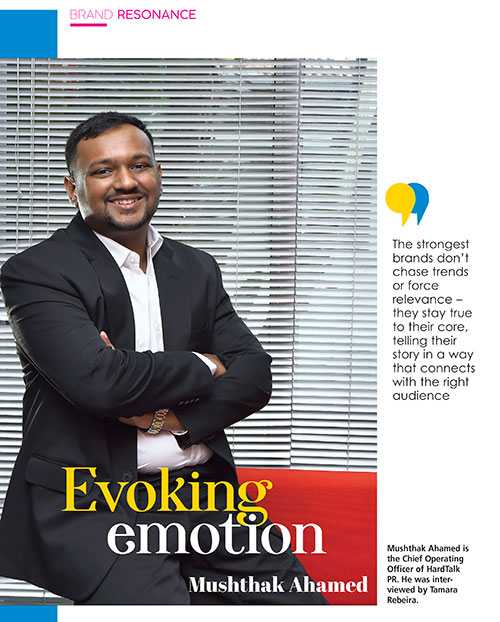BRANDS ANNUAL 2019
CONGLOMERATE BRANDS
Building a conglomerate corporate brand
The corporate brands of conglomerates have a major influence on and play an important role in business in Sri Lanka. This is based on the sectors in which they operate, their customer reach, the large number of individuals they employ and the many suppliers with whom they work.

They also have a sizable impact and influence on various state and regulatory bodies that operate in the country.
These businesses play such an influential role and have such an impact on so many stakeholders that it could be assumed they’d manage their corporate conglomerate brands more diligently. However, aside from a few instances, this is a neglected area.
There’s much to gain if such businesses actively manage their brands, assess risks and consider further means of leveraging them. This could help attract better quality talent to the businesses in which they operate, by leveraging customer equity and better terms from suppliers who would want to work with such reputed businesses.
These financial reasons can justify even minimal corporate brand management for the benefit of shareholder value creation.
In this context, Brand Finance carried out a valuation of conglomerates to demonstrate the potental brand value that these corporates could unleash.
How we do it
The brands were valued by first identifying the business segments in which the conglomerates operate. Future revenues that could be expected from each of the sectors were then estimated based on historical performance and the sector outlook.
A royalty rate relevant to the sector was applied to the revenue to arrive at the brand value for that segment. Once each sector value was computed, it was aggregated to arrive at the potential brand portfolio value.
How it could be used
The corporate brand however, may or may not play a role in every customer facing business – for example, the Hemas Holdings brand isn’t used in the context of its hotels but for the group’s hospitals; and it endorses fast-moving consumer goods (FMCG) products.
Depending on where it is applied, the corporate brand will thus have different levels of influence and impact on creating value for a business. This can be measured and quantified.
Such quantification is useful as it provides indicative values across the group, which creates an opportunity to explore strategic branding options. These decisions could revolve around opportunities to leverage on the brand or relate to the risks that the corporate could face because of multiple usages across other unrelated areas.
The corporate brand risk assessment carried out by John Keells Holdings (JKH) some years ago is a good example of this.
Risk and opportunity analysis
Having set up a meat processing business, JKH launched and established a consumer range of meat products under the Keells brand. Upon receiving wide consumer acceptance, Keells meat was flagged as a possible risk to the reputation of the corporate brand following a brand risk assessment.
This conclusion was on the basis that Keells meat, being a perishable product, could be contaminated – and this may cause widespread consumer harm and reaction, thereby jeopardising other sectors (such as hotels, beverages and ice cream) as well as negatively impacting the JKH brand.
Acknowledging this risk and using ‘gut feel’ judgement, JKH transitioned its meat brand from Keells to Krest – a transition that was only concluded recently.
A corporate brand valuation could have been used to quantify the value at risk. In this example, such an analysis would be helpful for highly diversified companies that have in the past operated without paying too much attention to such possibilities of brand risk.
On the other hand, the reverse situation of opportunities for leveraging on the corporate brand could identify potential value among many of these diverse conglomerates.
In this instance, opportunities could be identified based on how corporate endorsement may be used to positively impact and enhance the value of a particular business or product. Such exercises use market research to assess stakeholder perceptions and likely behaviour, which is inputted into financial models to assess possible valuation outcomes and scenario mapping to facilitate decision making.
Epitome of a Sri Lankan corporate
JKH is the clear leader on our table with a value that is double that of second placed Hayleys. The latter has climbed up three places (from No. 5 to second place) due to its acquisition of Singer (Sri Lanka).
Despite recording a far higher revenue than JKH (Hayleys was No. 1 in the 2017/18 edition of the LMD 100, which was released in December), it falls short in terms of our corporate brand portfolio value measure.
This is primarily because the sectors in which JKH operates are assigned a higher royalty rate and have a better growth outlook than those of which Hayleys is operating in.
So in this context, big isn’t always better.







